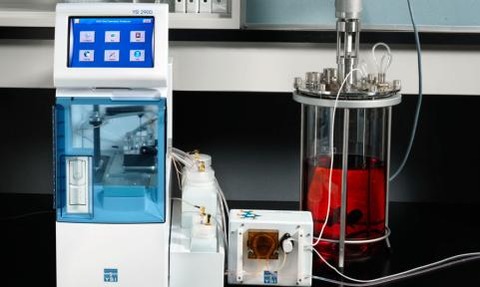
The YSI 2900 Biochemistry Analyser was the instrument of choice for researchers seeking to improve the growth and culture of e. coli.
Escherichia coli (E. coli) can be grown and cultured easily in a laboratory setting and the biotechnology industry has intensively researched and exploited E. coli for producing recombinant proteins and biofuels.
However, high growth rate aerobic E. Coli cultivations are accompanied by overflow metabolism in the form of acetate excretion, which inhibits growth.
The growth rate and overflow metabolism can be controlled by monitoring and limiting the addition of glucose nutrient to the culture medium or bioreactor in fed-batch processes.
But, although this and other process approaches have been applied to prevent overflow metabolism, they often result in reductions in growth rate, biomass yield in recombinant protein production, and plasmid DNA content per cell.
In a report published by Wiley Online Library in March 2014, researchers from the Department of Process and Technology, University Autonoma Metropolitana-Cuajimalpa, Mexico, presented an alternative approach based on increasing the efficiency of aerobic metabolism by the expression of the Vitreoscilla stercoraria hemoglobin (VHb) to avoid overflow metabolism.
In the study, the respiratory activity was enhanced by aerobically expressing VHb, encoded with the gene vgh.
The report claims: “VHb is expected to increase the consumption of NADH in the respiratory chain, leading to increased activity of the tricarboxylic acid (TCA) cycle. This would result in a faster consumption of acetyl Co-A and a decrease in acetate production.
“When this strategy was tested in E. coli strains, acetate production decreased by 50% in MG1655 and more than 90% in W3110, without affecting growth rates or biomass yields.
“VHb expression in mutant strains with higher TCA activity and reduced acetate formation resulted in a significant increase in growth and glucose consumption rates, whereas acetate production did not increase. The results presented here show that enhancing the efficiency of aerobic metabolism is a valuable approach to avoid overflow metabolism in E. coli and to attain high cell densities in batch mode.”
Glucose concentration was determined with a YSI 2900 Biochemistry Analyser during the study.
The two E. coli strains W3110 and MG1655 were compared in batch mode using a low (7 g/L) glucose concentration, and the best strain was also tested under high (45 g/L) glucose concentration in order to achieve high cell densities in batch mode.
The YSI 2900 Analyser is designed to give rapid and highly accurate results using YSI sensor technology across a broad range of chemistries, including glucose, lactate, glutamine, glutamate, ammonium and ethanol.
The 2900 model will measure two compatible chemistries and the YSI 2950 model up to six.
The Online version of the YSI 2900, the YSI 2900M Monitoring and Control system, uses the Sitini Online Sampler to automatically draw samples from a bioreactor and deliver to the 2900 for testing.




